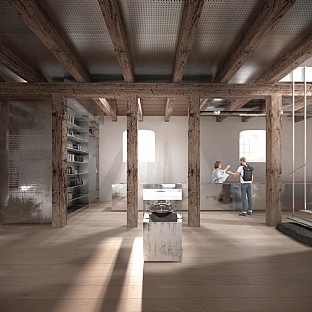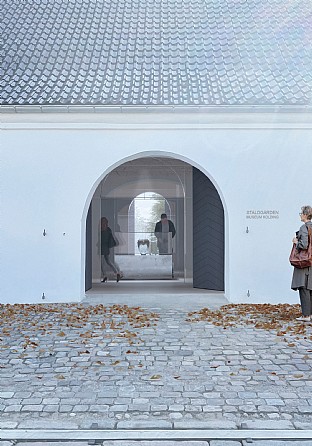The listed building, the Stable Yard (Staldgården) in Kolding, has so far been inaccessible to the public. With the transformation, the building will be opened – and together with the royal castle Koldinghus, it forms a building complex that appears as a historical landmark, a vibrant meeting place for locals and a dynamic centre for communication, knowledge and experiences for all visitors.
Over the years, the Stable Yard has housed a stud farm for the Danish Defence Command, Gestapo headquarters and a employment centre. With the sketch proposal, the historic building has been transformed into the heart of Museum Kolding, which communicates the city's history and has one of Denmark's finest silver collections.
A constantly evolving building
The outline project involves restoration and transformation of the Stable Yard, which has more than 600 years of history and is marked by different users and purposes over time. The project involves a comprehensive building analysis of the various building parts and functions, each representing their own period in the history of the Stable Yard as a building that has constantly evolved in relation to its time. In close collaboration with Museum Kolding, principles for the museum design have been developed based on an analysis of opportunities and needs, so that the transformation of the Stable Yard is a vibrant and modern museum that is also possible to establish within the building’s structural framework.
Based on the building's conservation status, which focuses on Nicolai Eigtved's reconstruction in 1736, the transformation is outlined with the stable yard motif as the main narrative throughout the museum experience. There is a clear distinction in architecture and materiality between the stable yard motif, the existing and new museum elements in the old wings. In this way, the house appears as a modern museum with traces of the many ancient monuments, which tell the story of a building that has been the setting for small and large events in both local and national history.






